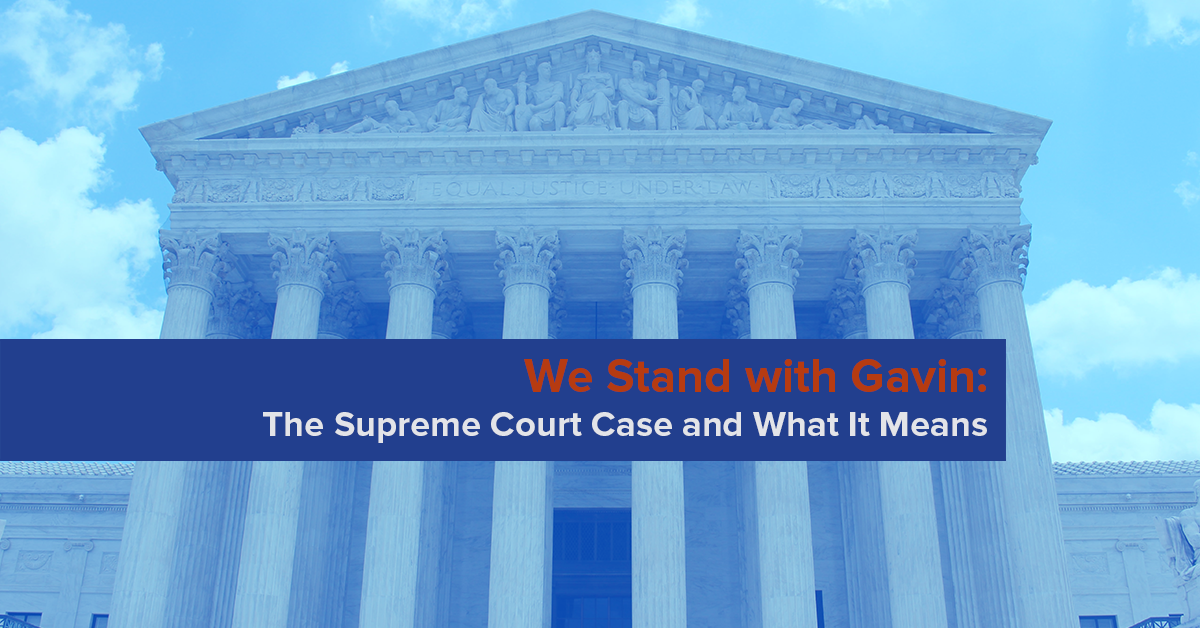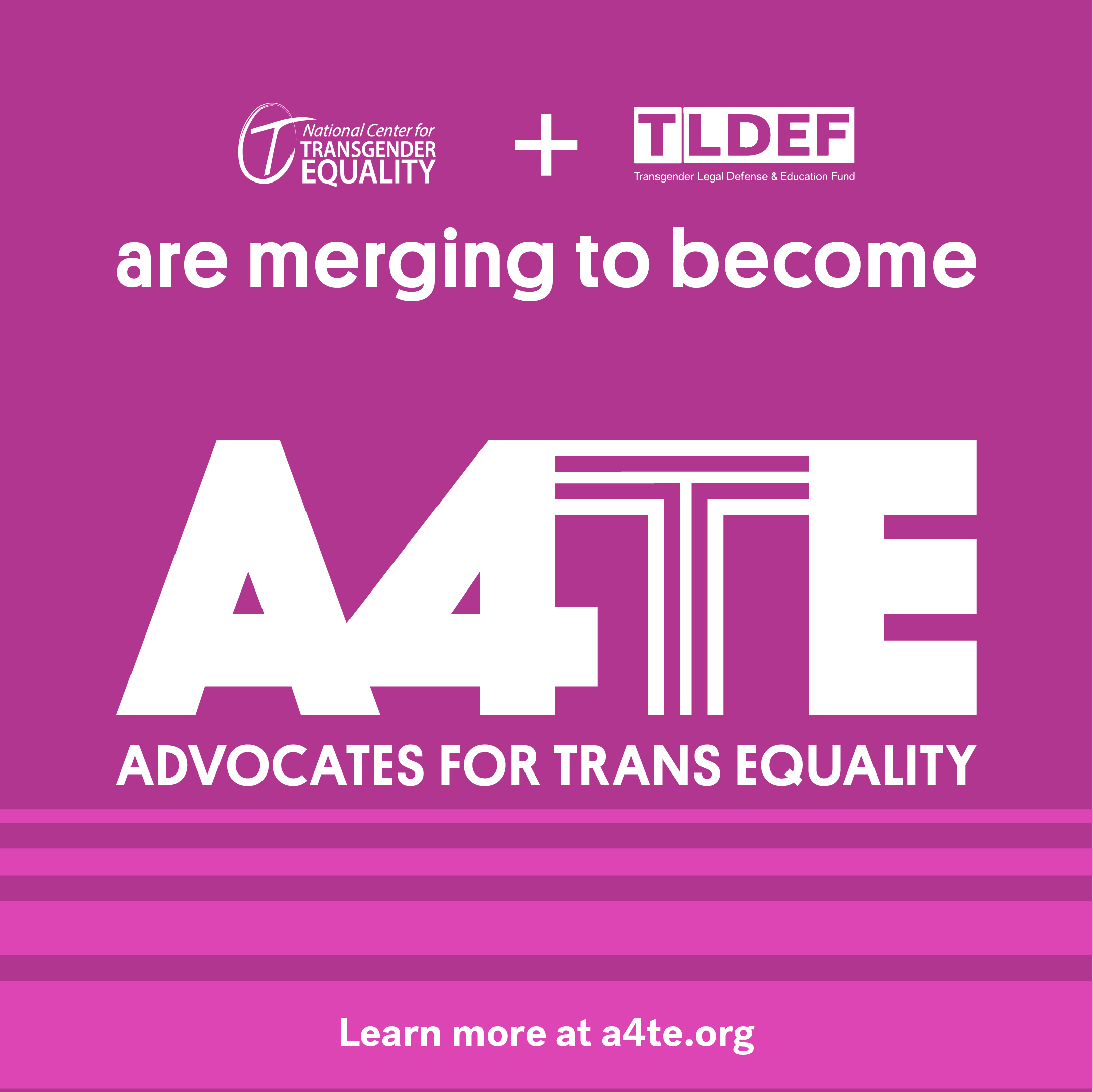We Stand with Gavin: The Supreme Court Case and What It Means

“If you told me two years ago that the Supreme Court was going to have to approve whether I could use the school restroom, I would have thought you were joking.”
That’s what Virginia high school senior Gavin Grimm wrote in the Washington Post on Friday. Today, hundreds of thousands of transgender students across the country might be feeling the same way. In the coming months, the United States Supreme Court will hear Gavin’s case.
Gavin didn’t ask to be a national figure. Like Ash Whitaker, Nicole Maines and so many other students across the country, he just wanted to finish high school—and to be treated like any other student. He certainly didn’t want to sit through public meetings where hundreds of students, parents, and staff debated his body parts and restroom use in front of TV cameras. But that’s what happened. Why? Just because Gavin is transgender. Even though Gavin lives as a boy, and uses the restrooms that match who he is at restaurants and shopping malls—and even though no one can point to a single problem that happened when he did the same at school for weeks—and even though transgender students do the same at school in thousands of school districts, the Gloucester County School Board decided to single Gavin out, and make him use a separate restroom from every other student. That means a walk of shame across the school building every time nature calls.
The good news is this: the U.S. Department of Education, national teachers’ and school administrators’ groups, pediatricians’ groups, and a federal appeals court agreed with Gavin and his family. So do most Americans. But a lot of people still don’t, and now the Supreme Court has agreed to decide the case.
What does this mean for transgender equality? Whatever else happens, it’s not great news for Gavin, who will most likely finish out his high school career under his school’s discriminatory policy while he waits for the Supreme Court to decide the case. It could be weeks before Gavin’s case is argued before the justices, and it could be well into next year--as late as the end of June 2017--before the Court delivers its ruling.
In the meantime, there are numerous other important cases pending in the lower courts involving discrimination against transgender people in schools, the workplace, and health care (though some could be put on hold). For example, there’s the case of Ash Whitaker, who avoided drinking water during the school day when his Wisconsin school not only banned him from the boys’ room but ordered security guards to watch his restroom use. And the case of “Jane Doe,” whose Ohio school district actually sued the federal government in its quest to keep her out of the girls’ room. There’s “Student A,” who worked out a deal with her school to use the girls’ restrooms and locker rooms until a handful of families sued claiming her very presence violated their privacy. Federal judges in all three cases ruled in recent weeks that these students have the right to be who they are at school. These cases will continue to wind their way through the lower courts in the coming months.
So will cases filed by fear-mongering state officials who—though unable to cite any actual harm to anyone—have asked courts to declare, in the abstract, that transgender students don’t have right. A similar challenge was recently filed to federal health care regulations that protect trans people. So far, they’ve found one Texas judge who agrees and who has tried to order the Department of Education not to take any enforcement actions to protect trans students’ rights in restrooms while the case proceeds. The federal government is appealing that order, and the Texas court can’t stop students from filing suits to protect their own rights, or other judges from issuing decisions.
Challenges by transgender students and workers and the US Justice Department to North Carolina’s anti-trans House Bill 2 also continue to wind their way through the courts, and one challenge is currently before the same appeals court that previously ruled for Gavin. (School administrators from around the country have filed a brief against HB 2, and nearly 150 anti-sexual assault groups and domestic violence groups have also filed a brief demolishing the myth that fairness for trans people creates safety risks.) And there will likely be pitched battles in early 2017 to stop the passage of HB 2-style bills in other states.
What will the Court do? We can’t know. Right not the court has only eight Justices, and a four-four split would leave the Fourth Circuit appeals court’s ruling for Gavin in place without setting a national precedent. The next President will likely nominate a new Justice in January, but it’s anyone’s guess when they’ll be confirmed. The Court could rule only on a technical issue in Gavin’s case and send it back to the appeals court, but that looks unlikely. The Supreme Court could deliver a historic victory or a major—though likely not permanent—setback for transgender equality.
In the meantime, transgender people have to live their daily lives in every community in this country. More and more schools, workplaces, and people in general understand and respect us for who we are. While too many transgender people each day are still facing disrespect and discrimination like Gavin, NCTE and trans people and our loved ones and allies all across the country will not give up until everyone is able to live safe, free, and respected for who they are.
If you have faced discrimination in school, at work, in health care, or elsewhere, see NCTE's Know Your Rights resources and consider seeking legal help.

